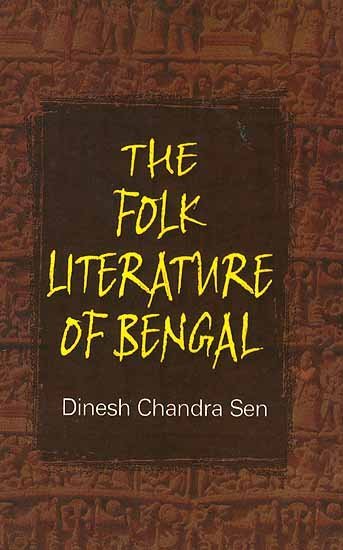Folk Tradition of Bengal (and Rabindranath Tagore)
by Joydeep Mukherjee | 2018 | 49,317 words | ISBN-10: 8186036989 | ISBN-13: 9788186036983
An English study regarding the Folk Tradition of Bengal and its influence on Rabindranath Tagore—an important Bengali polymath from the 19th century who excelled in philosophy, arts (painting), literature and music. This research tries to initiate the semantic aspect of “folk” through the help of various dictionaries....
Chapter 5.3 - Prosodic similarity between Lalon Fakir and Rabindranath Tagore
Tagore was very much ignited by the structure of Lalon Fakir. In 1341 according to Bangla calendar Tagore read an essay “Channder Prakiti” (The Nature of Prosody) in Calcutta University which later came to be popular as Chhanda (Prosody). Here he explained the prosodic style of Lalon Fakir.
He mentioned:
Prakrito Banglar duyorani k jara suyoranir aprotihoto bhabe sahityer goal ghore ashroy na diye hridoye sthan diyeche, sei ‘asikkihito’ lanchona dharir dol jothattho Bangla bhasar sompod niye anondo korte badha paina. Tader praner govir kotha tader praner sohoj bhasai udhrito kore di.
Translation:
“The original form of Bangla is perfectly dealt by those uneducated people. They know the method of showing respect. They have made a language which is a matter of pride. Therefore, I should take the initiative to make you understand their language welling out of the depth of their heart with simple language.”
The research here intends to refer those two songs of Lalon Fakir which he himself explained the typical prosodic style:
Ache jar moner manush apon mone
Se ki r jope mala
Nirjone se bose bose dekhche khela|
Kache roy, dake tare
Ucchasware
Kon pagela,…
Ore Lalon bherer lok dhekhano
Mukhe hori hori bola|
Translation:
“Bead counting is no more important for man who bears ‘moner manush’ at his bottom of the heart. He silently notices all the games of action throughout the day. He will not respond even if you call at the peak of your voice. Even the mad chanting of ‘hari, hari’ is also futile. Lalon says it is nothing but a distorted disguised self of the person that can never feel the self disguised as ‘moner manush’ in his soul.”
In another song he tells:
Amon manob jonom ki r hobe|
Ja kor mon tarai kor
Ei vobe|
Anantarup shristi kore sain
Shuni manober tulona kichui nai
Deb debota gon
Kore aradhon
Janmo nite manobe…
Ebar thokle r
Na dekhi kinar
Lalon koi kator bhabe.
Translation:
“Man gets his birth as man only one time. Hence, h should work religiously to achieve the purpose and goal of this life. Sain, the absolute soul makes the soul infinite to enjoy the beauty of finite world i.e. earth. All Gods and Goddesses are worshipping to be reborn. The life of human being has the real sense of meaning of living. Man should realize it and do work accordingly. Lalon says one mistake can lead to any disappointment. Therefore, Lalon says man has to learn through his mistakes.”
At last the poet says here the prosodic structure is just like a river that has fluidity but different pace. It is always lively taking turns and twists according to the tone, temperament and subject matter of the song almost in the similar pattern of a river taking turn according to the geographic condition. In the middle, he initiated everyday language of Bengali people with such prosodic style. Here he explored in them the simple pattern of prosody attributing to the simplicity of language especially a language called sandhya bhasa meaning the play of colloquial and common word in the same composition.
For such illustration, he exemplified a long by Lalon:
“Kotha ache din dorodi Sain”
Translation:
“Where I can get Sain, a caring person for the insolvent”.
